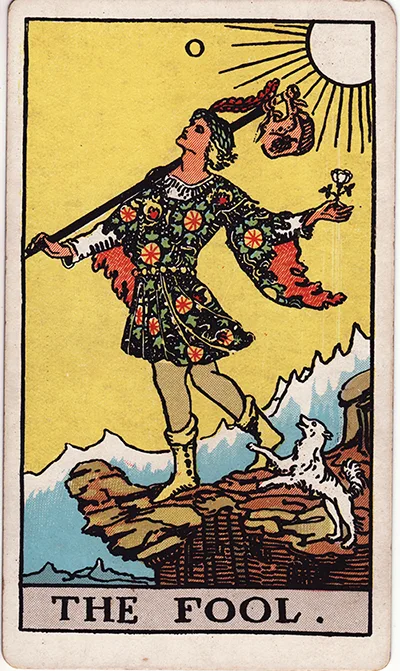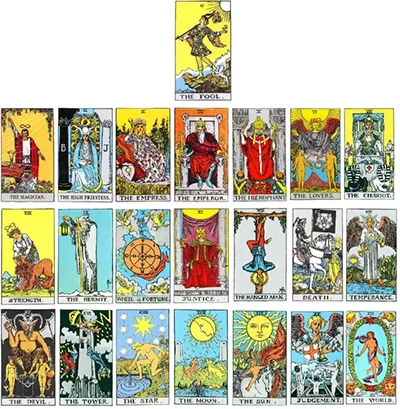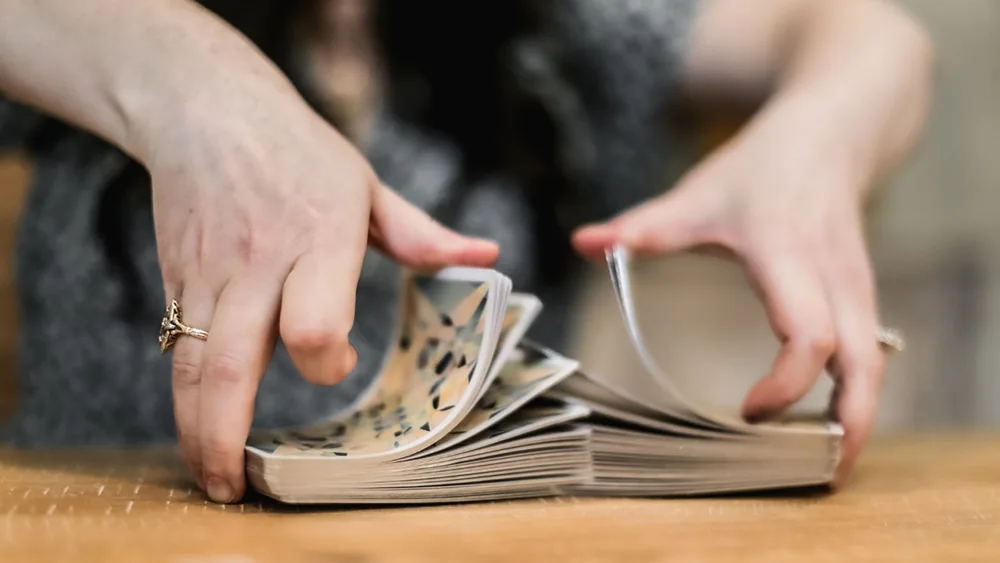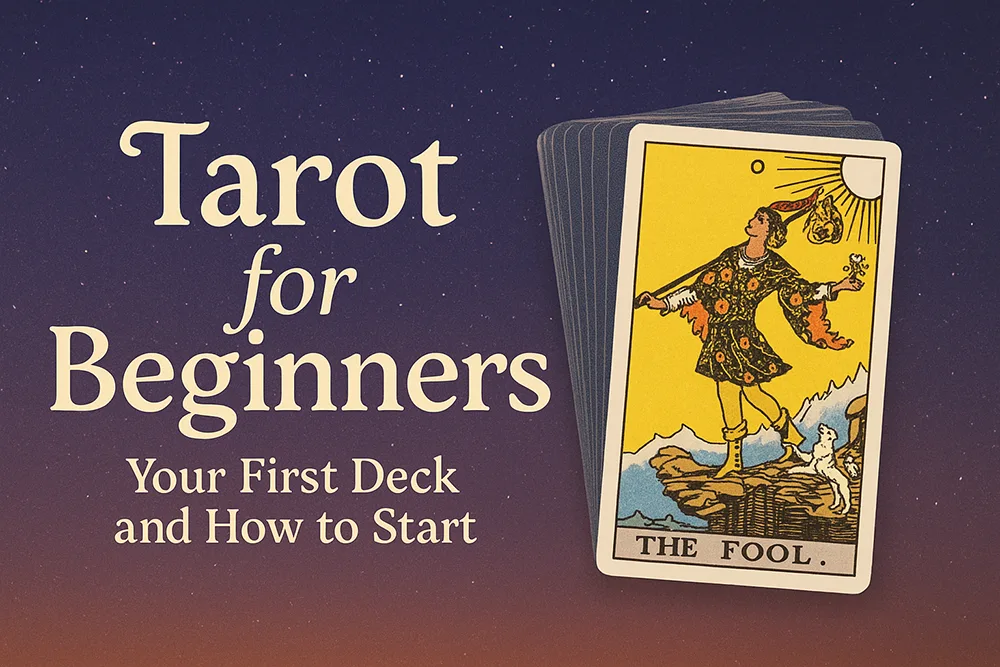Welcome to the enchanting world of tarot! If you’re new to tarot reading and feeling a mix of excitement and uncertainty, you’re in the right place. This comprehensive guide on tarot for beginners is designed to help you navigate your journey from selecting your first tarot deck to performing your initial readings with confidence. Whether you’re drawn to tarot for self-reflection, spiritual growth, or simply curiosity, learning how to start tarot reading can be a transformative experience. In this beginner’s guide, we’ll cover everything you need to know, including tips on choosing the right deck, understanding the cards, and building a daily practice. By the end, you’ll be equipped to embark on your tarot adventure.
Tarot has captivated people for centuries, offering insights into life’s mysteries through symbolic imagery and intuitive interpretation. Unlike palmistry, which involves reading the lines and shapes of the hands to glean information about personality and future events, tarot uses a deck of 78 cards to tap into universal archetypes and energies. While both practices fall under the umbrella of divination and can complement each other—perhaps using palmistry for quick personality assessments and tarot for deeper narrative guidance—this guide focuses on tarot as an accessible entry point for beginners. If you’re interested in palmistry as well, think of tarot as a visual storytelling tool that pairs beautifully with hand-reading techniques for a more holistic approach to self-discovery.
What Is Tarot and Why Start Now?
Tarot is more than just a set of cards; it’s a system of divination that dates back to the 15th century in Europe, originally used for games before evolving into a tool for mystical insights. A standard tarot deck consists of 78 cards divided into two main sections: the Major Arcana (22 cards representing significant life events and spiritual lessons) and the Minor Arcana (56 cards dealing with everyday matters, similar to a regular playing card deck but with added symbolism).
For beginners, starting tarot reading can feel overwhelming, but it’s incredibly rewarding. In today’s fast-paced world, tarot offers a way to pause, reflect, and gain clarity on personal challenges, relationships, career paths, and more. Many people turn to tarot for beginners as a form of mindfulness practice, helping to develop intuition and self-awareness. Unlike fortune-telling stereotypes portrayed in media, modern tarot emphasizes empowerment—it’s about understanding possibilities rather than predicting fixed outcomes.
If you’ve ever wondered, “How do I start learning tarot?” you’re not alone. Millions are discovering this ancient art, blending it with contemporary wellness practices. Whether you’re a skeptic seeking fun or a spiritual seeker, your first tarot deck can open doors to profound personal growth.
Understanding the Structure of a Tarot Deck
Before diving into your first tarot deck, it’s essential to grasp its structure. This knowledge forms the foundation for effective readings.
The Major Arcana: The Big Picture Cards
The Major Arcana cards are the “heavy hitters” of the deck, numbered from 0 to 21. They represent major life themes, karmic lessons, and spiritual journeys. For instance, The Fool (card 0) symbolizes new beginnings, innocence, and taking leaps of faith—perfect for tarot beginners embarking on their path.

Each Major Arcana card tells a story. The Magician (1) embodies manifestation and skill, while The Lovers (6) explores relationships and choices. As you learn tarot, studying these cards first can build your confidence, as their imagery is rich and narrative-driven.
In contrast to palmistry’s focus on physical hand features like the heart line for emotional insights, tarot’s Major Arcana provides a broader archetypal framework. You might even combine the two: a palm reading could highlight relational tendencies, and a tarot pull could offer advice on navigating them.
The Minor Arcana: Everyday Insights
The Minor Arcana is divided into four suits: Cups (emotions and relationships), Pentacles (material world and finances), Swords (thoughts and conflicts), and Wands (creativity and action). Each suit has cards from Ace to 10, plus four court cards: Page, Knight, Queen, and King.
For example, the Ace of Cups signifies new emotional beginnings, while the Ten of Swords represents endings and rock bottom—often a call for renewal. These cards mirror daily life, making them relatable for beginners.
Understanding reversals (when cards appear upside down) adds depth. While not mandatory for starters, reversals can indicate blocked energy or internal aspects. Begin with upright meanings to avoid confusion.

Choosing Your First Tarot Deck: A Beginner’s Guide
Selecting your first tarot deck is a personal milestone. With thousands of options available, where do you start?
Recommended Decks for Tarot Beginners
For novices, the Rider-Waite-Smith (RWS) deck is the gold standard. Created in 1909 by Arthur Edward Waite and illustrated by Pamela Colman Smith, it features detailed, symbolic imagery on every card, making interpretation intuitive. Unlike minimalist decks, RWS’s scenes help beginners “read” the story visually.
Other beginner-friendly options include:
- The Modern Witch Tarot: A contemporary twist on RWS with diverse representations.
- The Wild Unknown Tarot: Artistic and animal-themed, great for nature lovers.
- The Light Seer’s Tarot: Positive, uplifting illustrations for those seeking encouragement.
Avoid overly complex or oracle decks (which don’t follow tarot structure) at first. Stick to traditional 78-card tarot decks.
When shopping, consider size (standard or pocket for portability), card stock quality (durable and shuffle-friendly), and guidebooks. Many decks come with companion books explaining meanings—essential for tarot for beginners.
Budget-wise, expect to spend $20-50. Purchase from reputable sources like bookstores, online metaphysical shops, or Amazon to ensure authenticity.
Factors to Consider in Your First Deck
Your deck should resonate with you. Hold it, flip through cards, and see if the artwork speaks to your intuition. If you’re into palmistry, look for decks with symbolic hand elements, like those incorporating astrological correspondences that align with palm lines.
Remember, there’s no “wrong” deck—it’s about connection. If it feels right, it’s yours.
Preparing Your Deck: Cleansing and Bonding
Once you have your first tarot deck, prepare it for use. This step builds a personal bond and clears any residual energy.
Cleansing Methods for Beginners
Cleansing removes factory or store energies. Simple methods include:
- Smudging with sage or palo santo: Pass cards through smoke while intending purity.
- Moonlight bathing: Leave under a full moon overnight.
- Knocking: Tap the deck three times to “wake it up.”
For palmistry enthusiasts, you might cleanse by holding the deck in your dominant hand, visualizing energy flowing from your palm lines into the cards.
Bonding with Your Deck
To bond, sleep with it under your pillow, carry it daily, or meditate while holding it. Interview your deck: Draw cards asking, “What do I need to know about you?” This fosters intuition.
How to Shuffle and Draw Cards
Shuffling is key to randomizing energies. Common techniques:
- Overhand shuffle: Slide packets from one hand to another.
- Riffle shuffle: Bridge halves together (gentle on cards).
- Hindu shuffle: Pull sections from top to bottom.

Shuffle until it feels right—intuition guides. Then, draw: Fan out and pick, or cut the deck and take top cards.
Basic Tarot Spreads for Beginners
Start with simple spreads to build skills.
The One-Card Pull
Ideal for daily guidance. Ask a question like “What energy should I focus on today?” Draw one card and interpret. For example, The Sun suggests positivity and success.
The Three-Card Spread
A versatile beginner favorite: Past, Present, Future.
- Position 1: Past influences.
- Position 2: Current situation.
- Position 3: Potential outcome. This spread provides context without overwhelm.
Other variations: Mind/Body/Spirit or Situation/Action/Outcome.
Interpreting Tarot Cards: Blending Tradition and Intuition
Interpretation combines traditional meanings with personal insight.
Learning Card Meanings
Use guidebooks or apps like Labyrinthos for references. Study one suit at a time. For Major Arcana, note archetypes; for Minor, elemental associations (Cups=Water/emotions).
Reversals: If using, they soften or invert upright meanings—e.g., upright Fool is adventure; reversed is caution.
Developing Intuition
Look beyond books: What colors, symbols, or emotions stand out? Journal readings to track patterns.
Incorporate palmistry by noting hand symbols in cards (e.g., The Magician’s raised hand) and relating to your own palm features.
Common Mistakes Tarot Beginners Make and How to Avoid Them
Beginners often over-rely on books, ignoring intuition—balance both. Another pitfall: Reading too frequently on the same question, leading to confusion. Limit to once per issue.
Don’t fear “bad” cards like Death—it’s transformation, not literal. Practice ethically: Get consent for others’ readings.
Building a Consistent Tarot Practice
Consistency is key. Start with daily one-card pulls. Join online communities like Reddit’s r/tarot for support. Read books like “78 Degrees of Wisdom” by Rachel Pollack.
Track progress in a journal: Note questions, cards, interpretations, and outcomes.
For advanced integration, explore tarot with palmistry: Use tarot to clarify palm readings or vice versa.
Frequently Asked Questions (FAQs) About Tarot for Beginners
What is the best first tarot deck for absolute beginners?
The Rider-Waite-Smith is highly recommended due to its illustrative scenes that make learning easier.
Do I need to be psychic to read tarot?
No! Tarot enhances existing intuition; anyone can learn with practice.
How often should I cleanse my deck?
After intense readings or monthly, depending on use.
Can tarot predict the future accurately?
Tarot shows potentials based on current energies; free will influences outcomes.
Is tarot related to palmistry?
Both are divination tools. Palmistry reads hands for traits; tarot uses cards for guidance. They can complement each other.
What if I draw mostly reversed cards?
It might indicate internal blocks; focus on upright meanings first if overwhelming.
How do I store my tarot deck?
In a cloth bag or box, away from direct sunlight to preserve cards.
Can I read tarot for others right away?
Practice on yourself first, then friends with permission.
Are there cultural considerations in tarot?
Respect origins; modern decks often incorporate diverse influences.
What’s the difference between tarot and oracle cards?
Tarot has a fixed structure; oracles vary in card count and themes.
Conclusion: Embrace Your Tarot Journey
Congratulations on taking the first step into tarot for beginners! With your first tarot deck in hand and these foundational skills, you’re ready to explore the depths of this mystical practice. Remember, tarot is a personal journey—be patient, trust your intuition, and enjoy the process. Whether you blend it with palmistry or keep it standalone, tarot can illuminate your path to self-discovery. Keep practicing, and soon you’ll be reading like a pro. Happy shuffling!
